DESIGN AND VALIDATION
COMPUTER PROTOCOLS
Gerard J. Holzmann -----------,
OF
PRENTICE HALL SOFTWARE SERI ES
www.spinroot.com�
DESIGN AND VALIDATION
OF COMPUTER PROTOCOLS
Gerard J. Holzmann
Bell Laboratories
Murray Hill, New Jersey 07974
PRENTICE-HALL
Englewood Cliffs, New Jersey 07632
www.spinroot.com�
Prentice Hall Software Series
Brian W. Kernighan, Advisor
Copyright
1991 by Lucent Technologies, Bell Laboratories, Incorporated.
This book is typeset in Times Roman by the author,
using an Linotronic 200P phototypesetter and a DEC VAX 8550
running the 10th Edition of the UNIX
operating system.
DEC and VAX are trademarks of Digital Equipment Corporation.
UNIX is a registered trademark of AT&T.
No part of this publication may be reproduced, stored in a retrieval system,
All rights reserved.
or transmitted, in any form or by any means, electronic,
mechanical, photocopying, recording, or otherwise,
without the prior written permission of the publisher.
Printed in the United States of America
10 9 8 7 6 5 4 3 2 1
Prentice-Hall International (UK) Limited, London
Prentice-Hall of Australia Pty. Limited, Sydney
Prentice-Hall Canada Inc., Toronto
Prentice-Hall Hispanoamericana, S.A., Mexico
Prentice-Hall of India Private Limited, New Delhi
Prentice-Hall of Japan, Inc., Tokyo
Simon & Schuster Asia Pte. Ltd., Singapore
Editora Prentice-Hall do Brasil, Ltda., Rio de Janeiro
www.spinroot.com�
Foreword
Preface
Part I — Basics
1. Introduction
1.1 Early Beginnings
1.2 The First Networks
1.3 Protocols as Languages
1.4 Protocol Standardization
1.5 Summary
Exercises
Bibliographic Notes
2. Protocol Structure
2.1 Introduction
2.2 The Five Elements of a Protocol
2.3 An Example
2.4 Service and Environment
2.5 Vocabulary and Format
2.6 Procedure Rules
2.7 Structured Protocol Design
2.8 Ten Rules of Design
2.9 Summary
Exercises
Bibliographic Notes
3. Error Control
3.1 Introduction
3.2 Error Model
3.3 Types of Transmission Errors
3.4 Redundancy
3.5 Types of Codes
3.6 Parity Check
3.7 Error Correction
3.8 A Linear Block Code
3.9 Cyclic Redundancy Checks
CONTENTS
ix
xi
1
9
12
13
15
16
16
19
21
22
26
32
35
35
38
39
39
40
43
44
46
46
47
48
48
52
56
www.spinroot.com�
3.10 Arithmetic Checksum
3.11 Summary
Exercises
Bibliographic Notes
4. Flow Control
4.1 Introduction
4.2 Window Protocols
4.3 Sequence Numbers
4.4 Negative Acknowledgments
4.5 Congestion Avoidance
4.6 Summary
Exercises
Bibliographic Notes
Part II — Specification and Modeling
5. Validation Models
5.1 Introduction
5.2 Processes, Channels, Variables
5.3 Executability of Statements
5.4 Variables and Data Types
5.5 Process Types
5.6 Message Channels
5.7 Control Flow
5.8 Examples
5.9 Modeling Procedures and Recursion
5.10 Message Type Definitions
5.11 Modeling Timeouts
5.12 Lynch’s Protocol Revisited
5.13 Summary
Exercises
Bibliographic Notes
6. Correctness Requirements
6.1 Introduction
6.2 Reasoning about Behavior
6.3 Assertions
6.4 System Invariants
6.5 Deadlocks
6.6 Bad Cycles
6.7 Temporal Claims
6.8 Summary
Exercises
Bibliographic Notes
7. Protocol Design
7.1 Introduction
63
64
64
65
66
70
74
80
83
86
87
88
90
91
91
92
93
96
100
102
104
104
105
106
107
108
109
111
112
114
115
117
118
119
125
126
127
128
www.spinroot.com�
7.2 Service Specification
7.3 Assumptions about the Channel
7.4 Protocol Vocabulary
7.5 Messsage Format
7.6 Procedure Rules
7.7 Summary
Exercises
Bibliographic Notes
8. Finite State Machines
8.1 Introduction
8.2 Informal Description
8.3 Formal Description
8.4 Execution of Machines
8.5 Minimization of Machines
8.6 The Conformance Testing Problem
8.7 Combining Machines
8.8 Extended Finite State Machines
8.9 Generalization of Machines
8.10 Restricted Models
8.11 Summary
Exercises
Bibliographic Notes
Part III — Conformance Testing, Synthesis and Validation
9. Conformance Testing
9.1 Introduction
9.2 Functional Testing
9.3 Structural Testing
9.4 Deriving UIO Sequences
9.5 Modified Transition Tours
9.6 An Alternative Method
9.7 Summary
Exercises
Bibliographic Notes
10. Protocol Synthesis
10.1 Introduction
10.2 Protocol Derivation
10.3 Derivation Algorithm
10.4 Incremental Design
10.5 Place Synchronization
10.6 Summary
Exercises
Bibliographic Notes
11. Protocol Validation
129
130
131
133
140
160
160
161
162
162
169
170
171
174
175
176
178
181
184
185
185
187
188
189
195
196
197
199
200
200
203
203
208
210
210
211
212
212
www.spinroot.com�
11.1 Introduction
11.2 Manual Proof Method
11.3 Automated Validation Methods
11.4 The Supertrace Algorithm
11.5 Detecting Non-Progress Cycles
11.6 Detecting Acceptance Cycles
11.7 Checking Temporal Claims
11.8 Complexity Management
11.9 Boundedness of PROMELA Models
11.10 Summary
Exercises
Bibliographic Notes
Part IV — Design Tools
12. A Protocol Simulator
12.1 Introduction
12.2 SPIN — Overview
12.3 Expressions
12.4 Variables
12.5 Statements
12.6 Control Flow
12.7 Process and Message Types
12.8 Macro Expansion
12.9 SPIN Options
12.10 Summary
Exercises
Bibliographic Notes
13. A Protocol Validator
13.1 Introduction
13.2 Structure of the Validator
13.3 The Validation Kernel
13.4 The Transition Matrix
13.5 The Validator-Generator Code
13.6 Overview of the Code
13.7 Guided Simulation
13.8 Some Applications
13.9 Coverage in Supertrace Mode
13.10 Summary
Exercises
Bibliographic Notes
214
214
218
226
231
234
235
235
237
238
239
240
243
244
245
255
265
275
282
292
293
294
295
296
297
298
299
302
303
306
308
310
315
316
316
317
www.spinroot.com�
14. Using the Validator
14.1 Introduction
14.2 An Optical Telegraph Protocol
14.3 Dekker’s Algorithm
14.4 A Larger Validation
14.5 Flow Control Validation
14.6 Session Layer Validation
14.7 Summary
Exercises
Bibliographic Notes
Conclusion
References
Appendices
Name Index
Subject Index
A. Data Transmission
B. Flow Chart Language
C. PROMELA Language Report
D. SPIN Simulator Source
E. SPIN Validator Source
F. PROMELA File Transfer Protocol
318
318
320
322
325
336
349
349
349
351
352
367
380
383
393
436
528
537
539
www.spinroot.com�
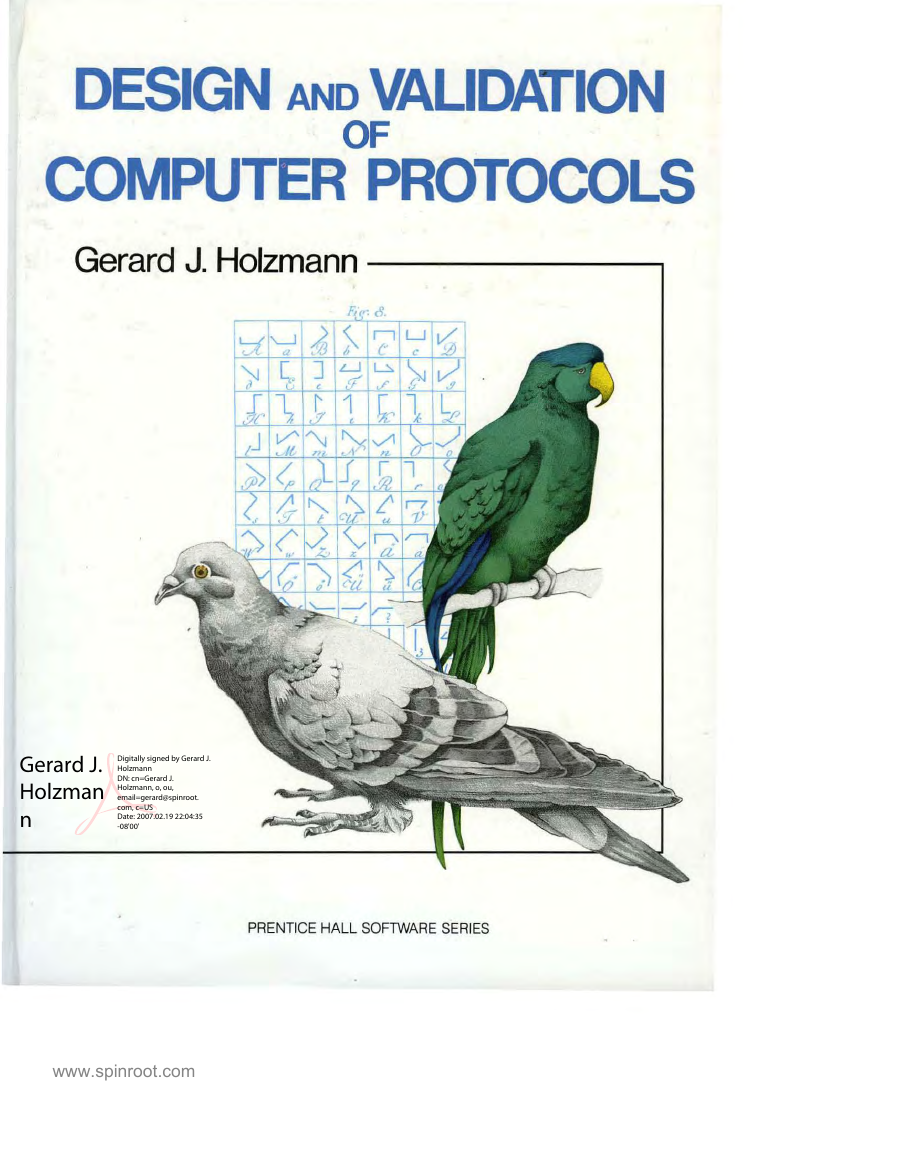
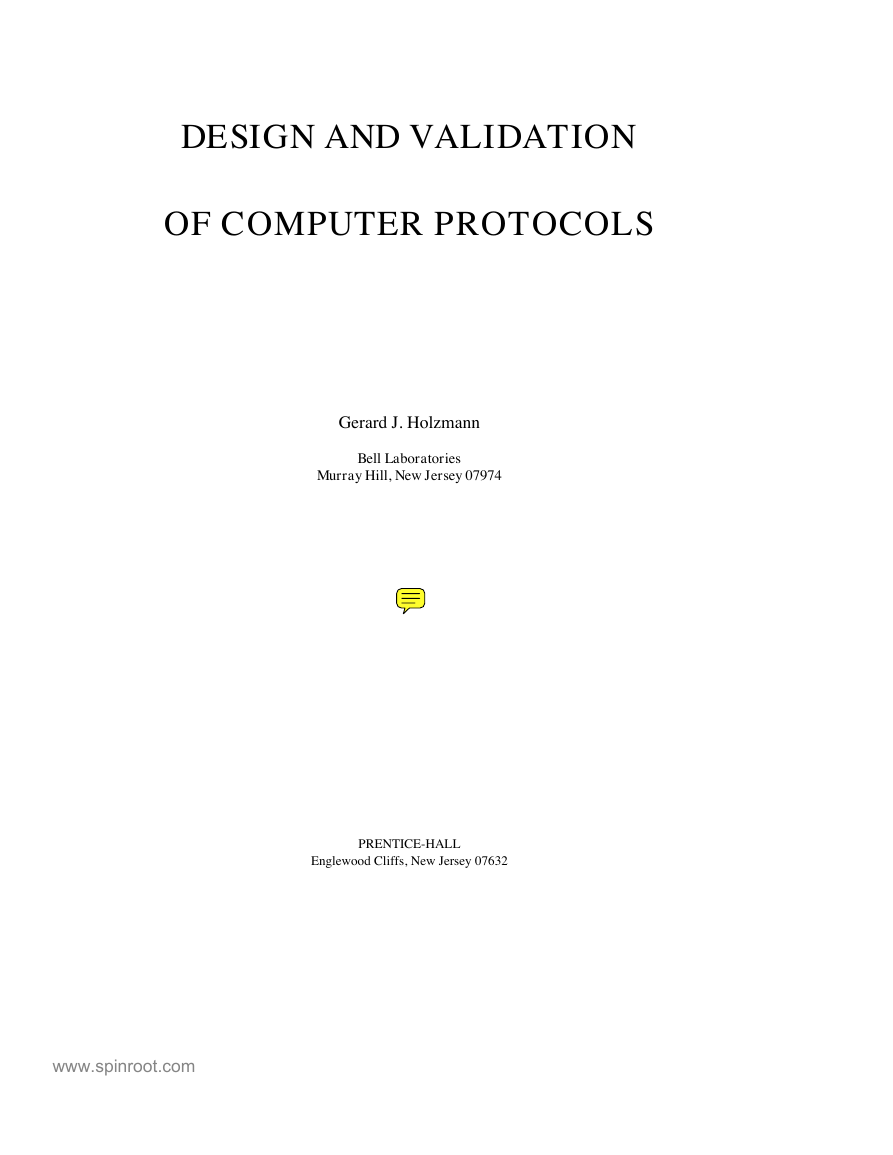
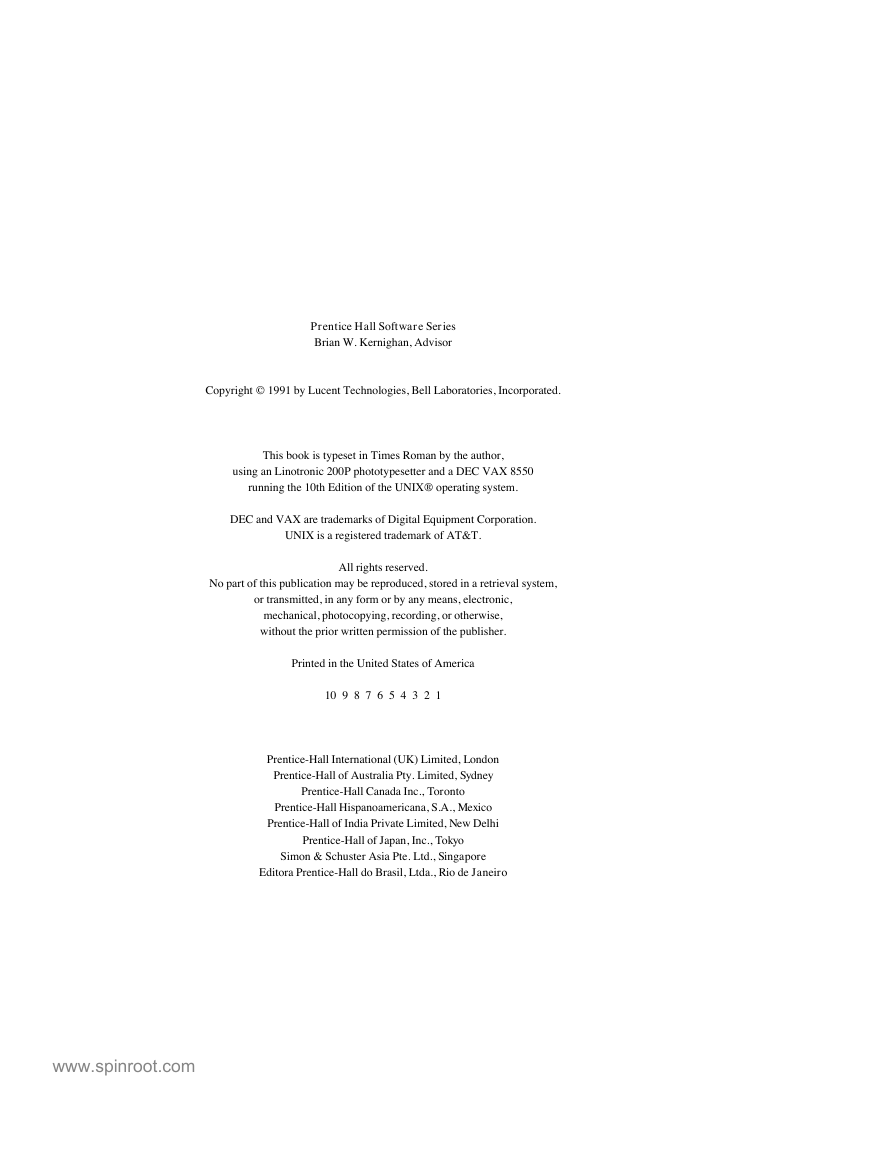
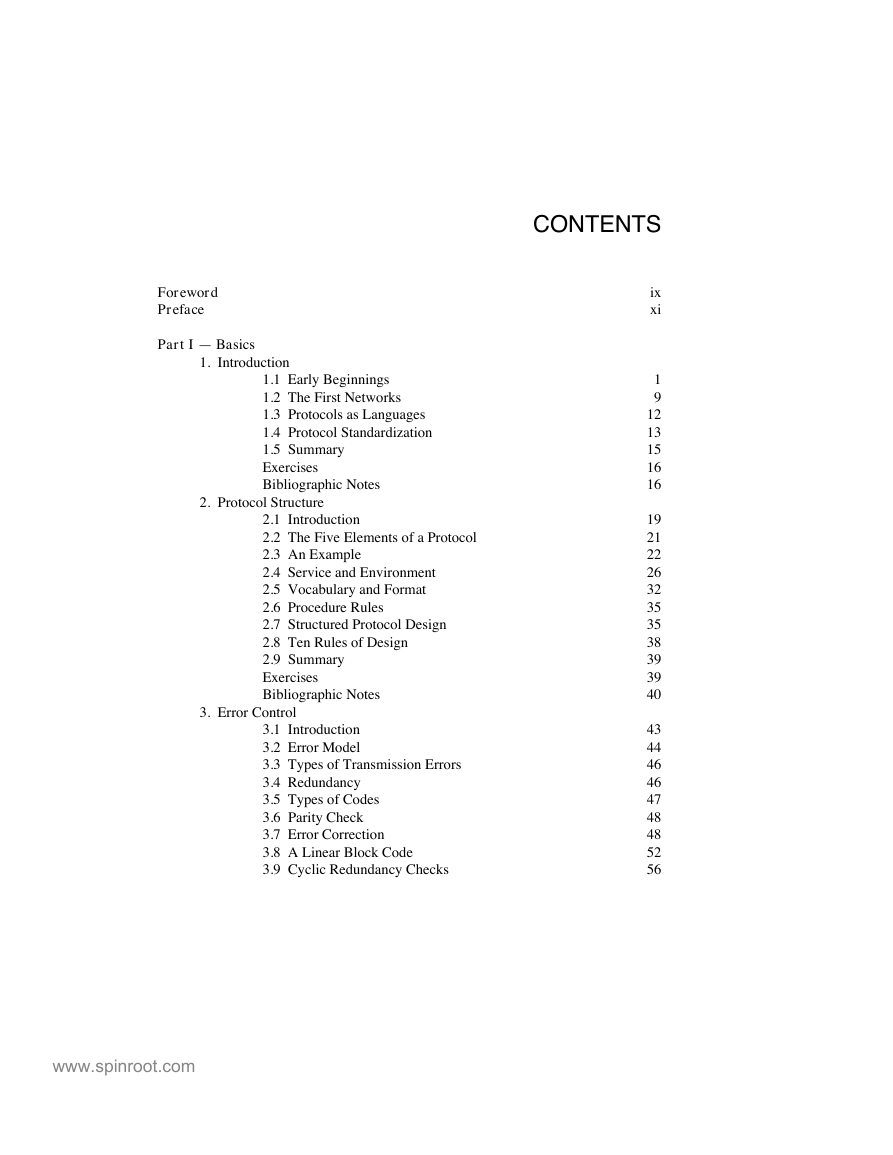

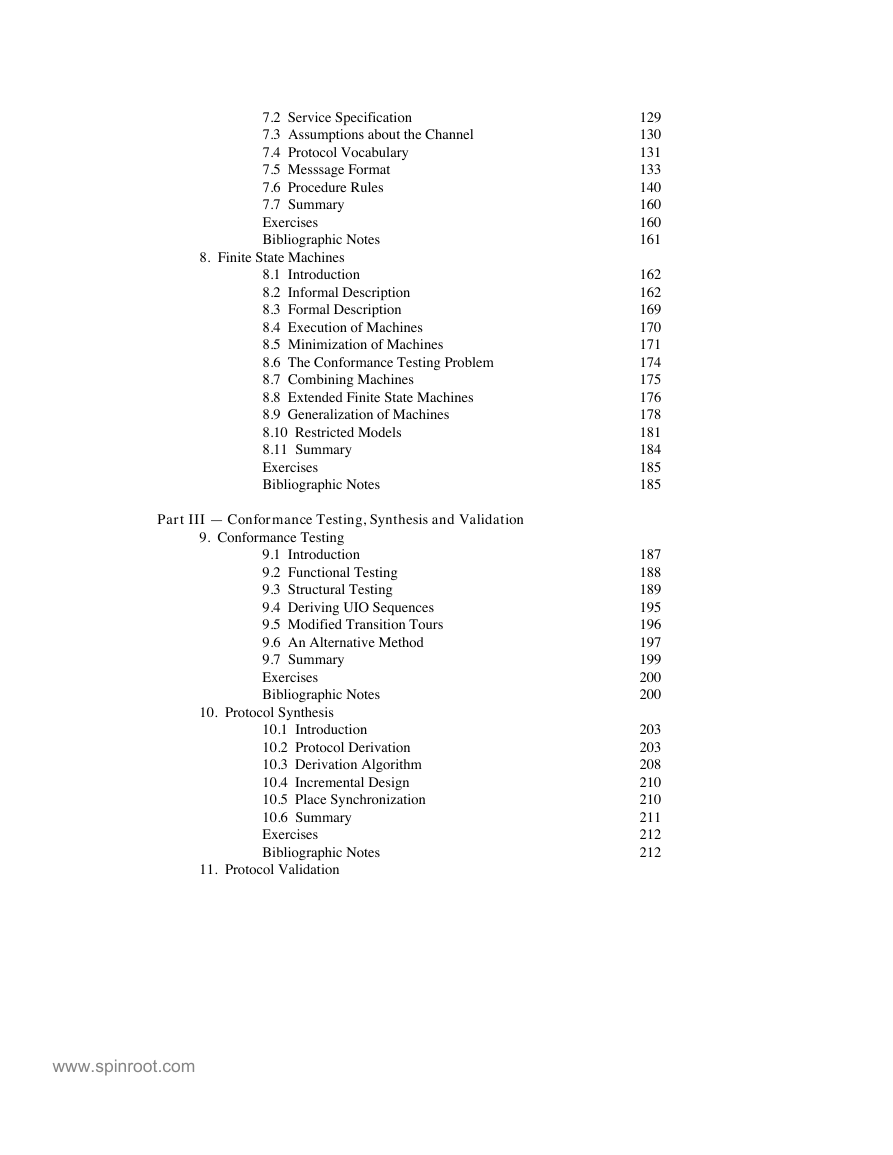
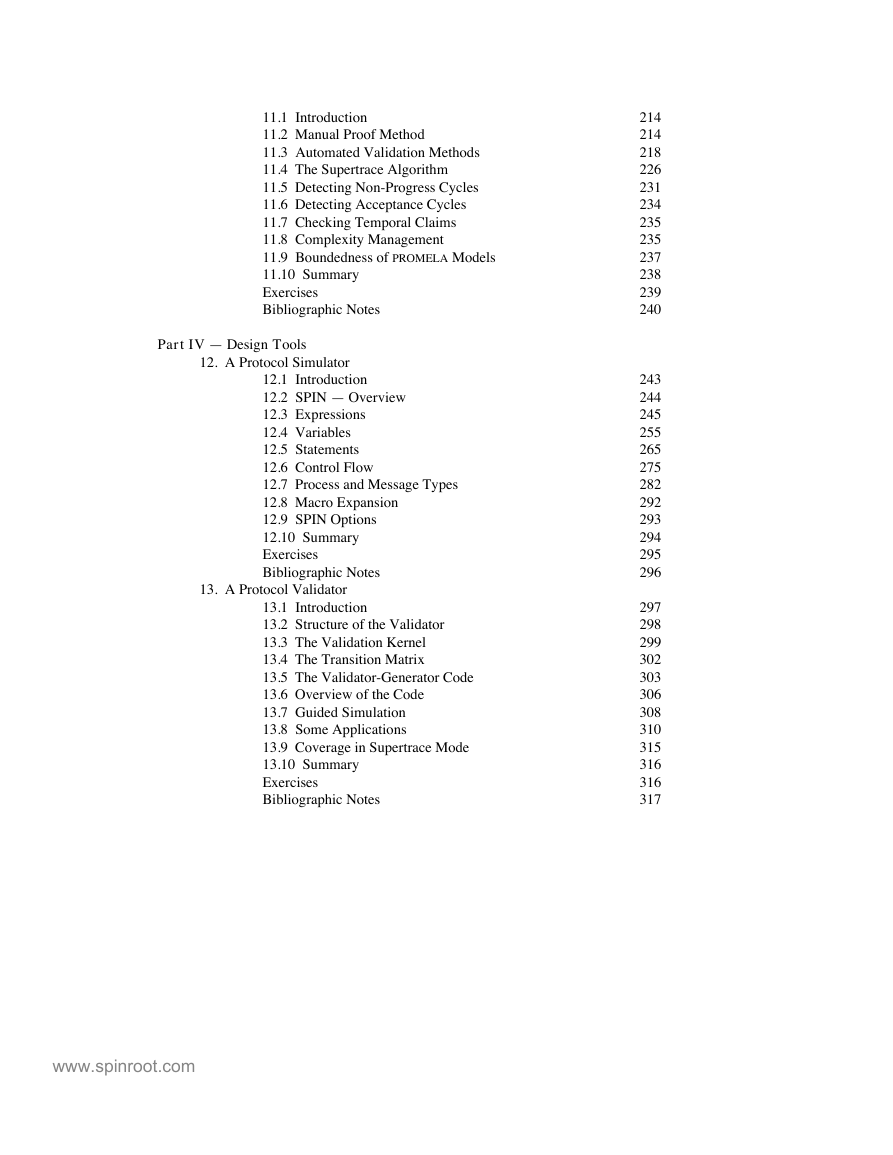
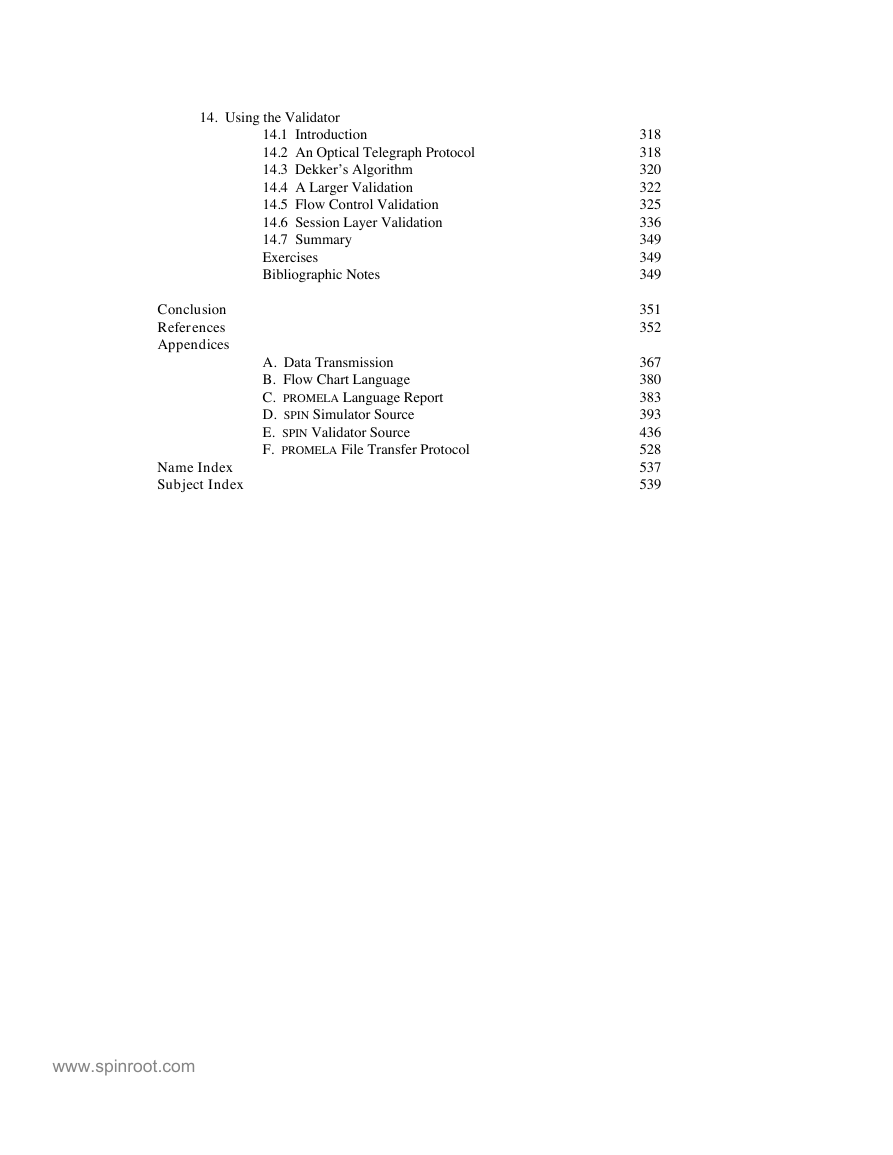








 2023年江西萍乡中考道德与法治真题及答案.doc
2023年江西萍乡中考道德与法治真题及答案.doc 2012年重庆南川中考生物真题及答案.doc
2012年重庆南川中考生物真题及答案.doc 2013年江西师范大学地理学综合及文艺理论基础考研真题.doc
2013年江西师范大学地理学综合及文艺理论基础考研真题.doc 2020年四川甘孜小升初语文真题及答案I卷.doc
2020年四川甘孜小升初语文真题及答案I卷.doc 2020年注册岩土工程师专业基础考试真题及答案.doc
2020年注册岩土工程师专业基础考试真题及答案.doc 2023-2024学年福建省厦门市九年级上学期数学月考试题及答案.doc
2023-2024学年福建省厦门市九年级上学期数学月考试题及答案.doc 2021-2022学年辽宁省沈阳市大东区九年级上学期语文期末试题及答案.doc
2021-2022学年辽宁省沈阳市大东区九年级上学期语文期末试题及答案.doc 2022-2023学年北京东城区初三第一学期物理期末试卷及答案.doc
2022-2023学年北京东城区初三第一学期物理期末试卷及答案.doc 2018上半年江西教师资格初中地理学科知识与教学能力真题及答案.doc
2018上半年江西教师资格初中地理学科知识与教学能力真题及答案.doc 2012年河北国家公务员申论考试真题及答案-省级.doc
2012年河北国家公务员申论考试真题及答案-省级.doc 2020-2021学年江苏省扬州市江都区邵樊片九年级上学期数学第一次质量检测试题及答案.doc
2020-2021学年江苏省扬州市江都区邵樊片九年级上学期数学第一次质量检测试题及答案.doc 2022下半年黑龙江教师资格证中学综合素质真题及答案.doc
2022下半年黑龙江教师资格证中学综合素质真题及答案.doc